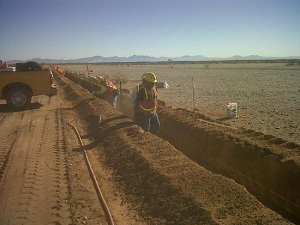California Governor enacts law streamlining solar-project permitting

Last week California Gov. Jerry Brown (D) signed into law SB 226, which can reduce permitting time for solar projects in California, particularly for urban infill projects and projects choosing to convert from solar thermal to photovoltaic technology. The law goes into effect in January 2012.
“The goal is to avoid duplicative review that is costly, both in terms of time and money, while retaining rigorous environmental review for projects, or project elements, that raise genuinely new issues,” said bill co-sponsor State Senator Joe Simitan (D).
The reduction in permitting or re-permitting time can be significant, leading to project cost-savings. For projects converting from solar thermal to photovoltaic (now that photovoltaic costs have fallen so dramatically) the time savings could be substantial.
“Time is money,” said California Solar Energy Industries Association (CalSEIA) Executive Director Mignon Meeks. “This aspect of SB 226 would likely save the power plant developer at least one year’s time, but probably more.”
The advocacy organization did not take a formal position on the legislation, she said.
Applications for large solar projects can take years as they work their way through the California Energy Commission’s approval process.
“Typically, applications to the Energy Commission take two years to prepare before they’re submitted to the Energy Commission. Then, the Energy Commission has to review the application and determine whether it’s data adequate—that is, complete,” Meeks said.
The review process adds another six months before public workshops begin, only then can the energy commission’s siting committee hold formal hearings on the project.
“Once a project application is deemed adequate, the siting process is supposed to be completed and a decision made within 12 months, but power plant developers—applicants—typically ask for delays in this schedule to allow them more time to resolve issues,” Meeks said. “A ‘yes’ decision that takes longer than 12 months is better than a ‘no’ decision received within the 12-month timeframe.”
The permitting process also requires an environmental impact report for the California Environmental Quality Act (CEQA). The new law also exempts CEQA review if the solar installations are on the roof of an existing building or parking lot.
The new law, however, already has some detractors in local governments.
Since it centralizes the approval process more—even if a project is changed from one technology to another—it gives local governments less voice in projects.
“We really believe that local control is critical. These solar projects will change the county’s landscape forever,” Riverside County Assistant County Counsel Katherine A. Lind told The Press-Enterprise.
Pictured: Workers dig a trench for one of the arrays at the Blythe Solar Project. Image courtesy of Solar Trust of America.



